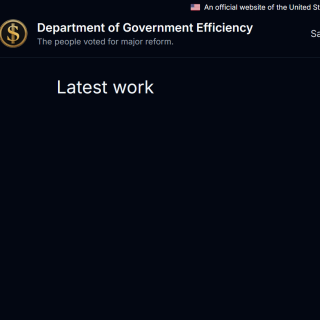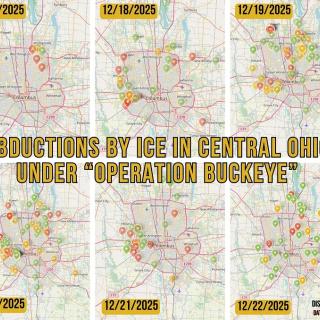Advertisement
Radioactive Nuclear Waste: The August and November issues of The Columbus Free Press had articles about the dangerous nature of the depleted uranium hexafluoride (DUF6) radioactive waste – contaminated with plutonium – at the Portsmouth Nuclear Site in Piketon, OH, and at the Paducah Nuclear Site in Kentucky. This waste was generated from the gaseous diffusion uranium enrichment process that went on at the two sites for the better part of 50 years, starting in the 1950s and ending in 2001 at Portsmouth and continuing until 2013 at Paducah. Uranium was first enriched at both sites for nuclear bombs, then later for nuclear power generation. The enrichment process separates the one percent of fissionable (able to generate a nuclear reaction) uranium isotope from the bulk of the uranium.
Corroding Cylinders: Chemical reactivity is causing the cylinders that hold the DUF6 to rust and leak. Many of the corroded cylinders are over 60 years old. There are over 24,000 of these 14-ton cylinders at Portsmouth and 40,000 at Paducah.
Conversion Facilities: Because DUF6 is highly chemically reactive as well as radioactive, Conversion facilities were built at the two sites to remove the fluorine from the uranium. The Conversion facilities were built by the U.S. Dept. of Energy (DOE) at a cost of over a billion dollars. With no explanation, both of these facilities stopped operations in the spring of 2015 and have been idled for over a year and a half.
Waste Becomes a “Resource”: On Nov. 10, 2016, the Dept. of Energy announced an agreement to sell the waste DUF6 to GE-Hitachi Global Laser Enrichment (GLE) over a 40-year period. Is this why there has been no hurry to get the conversion process operating? The plan is to re-enrich the DUF6 at Paducah with a never-before-used laser technology. DOE is planning to ship at least some of the Portsmouth cylinders to Paducah. GLE will finance, construct, own and operate the Paducah Laser Enrichment Facility (PLEF). According to the DOE, the $1 billion facility “could” create 800 to 1,200 jobs with “zero carbon energy.” Zero carbon is a flat-out falsehood, since nuclear power has a large carbon footprint all through the nuclear fuel cycle, from mining to waste storage. While the nuclear chain reaction itself produces no carbon, it produces a far more dangerous product, high-level radioactive nuclear waste.
Laser Enrichment and Nuclear Weapons Proliferation: Previous enrichment processes using diffusion and later centrifuges required massive buildings that generated large amounts of heat, easily detectable by satellite. The enrichment buildings at Portsmouth cover 93 acres under roof. In contrast, a laser enrichment facility will be the size of small building and give off only ordinary amounts of heat. This means that a nation that steals or independently invents laser enrichment technology can do so without being detected. Such a facility could be build underground. The laser process, like other enrichment, can be used to make nuclear bombs. The fact that one nation has this technology will undoubtedly spur other nations to develop laser enrichment. Remember the “aluminum tubes” that looked like centrifuges that were shipped to Iraq? That was enough to cause the U.S. to attack that nation.
Quietly Greasing the Skids: For a number of years, the DOE has been making plans under the radar to get laser enrichment at Paducah. In March of 2014 the Kentucky Dept. of Fish & Wildlife Resources voted to turn 665 acres of the West Kentucky Wildlife Management Area over to GLE. This area is next to the Paducah facility. Kentucky politicians have fallen for the notion of “jobs.” In April of 2016 GE & Hitachi said they would exit GLE. This was likely a way to better the negotiations with DOE for the DUF6, since they obviously are not exiting.
Future for the Conversion Facilities? DOE continues to waste taxpayer money by paying hundreds of millions to the Conversion plant operators for not operating the conversion facilities at Portsmouth and Paducah. In September of 2016, DOE announced the award of a contract to Mid-America Conversion Services, LLC for the operation of the DUF6 Conversion Facilities at Paducah and Portsmouth. The contract is for $319 million for 5 years starting in the first quarter of 2017. No date has been set for restarting the facilities. How soon will the over-1,000 cylinders that are currently damaged and leaking be converted? As the cylinders are sold to GLE, GLE will then own the DUF6 tailings. There is as yet no answer as to who will be responsible for running GLE’s re-enriched DUF6 through conversion when GLE is finished with it.



